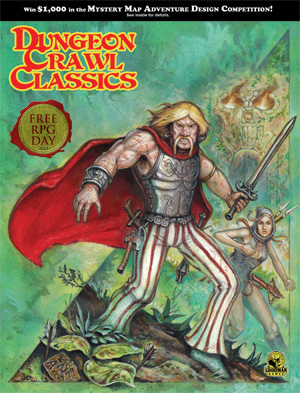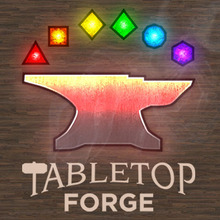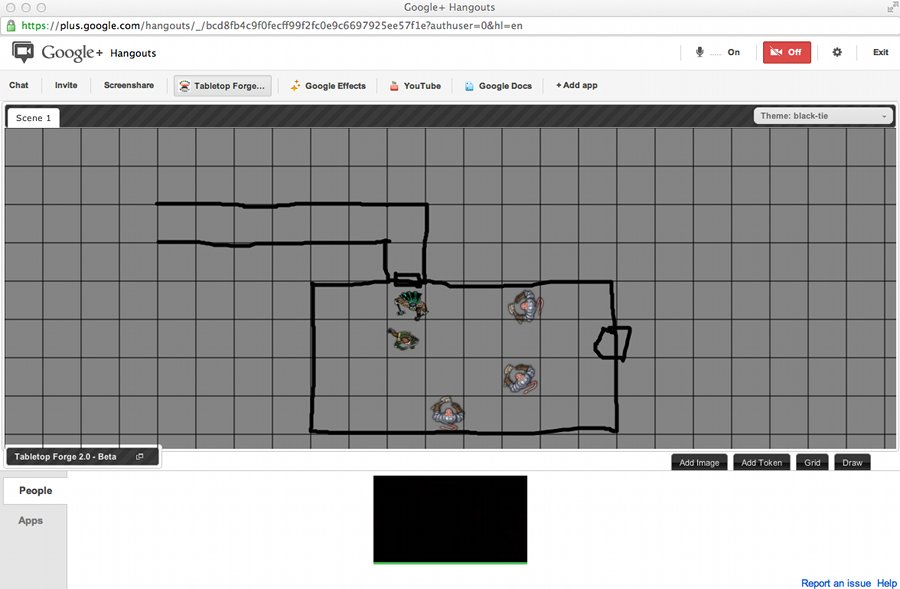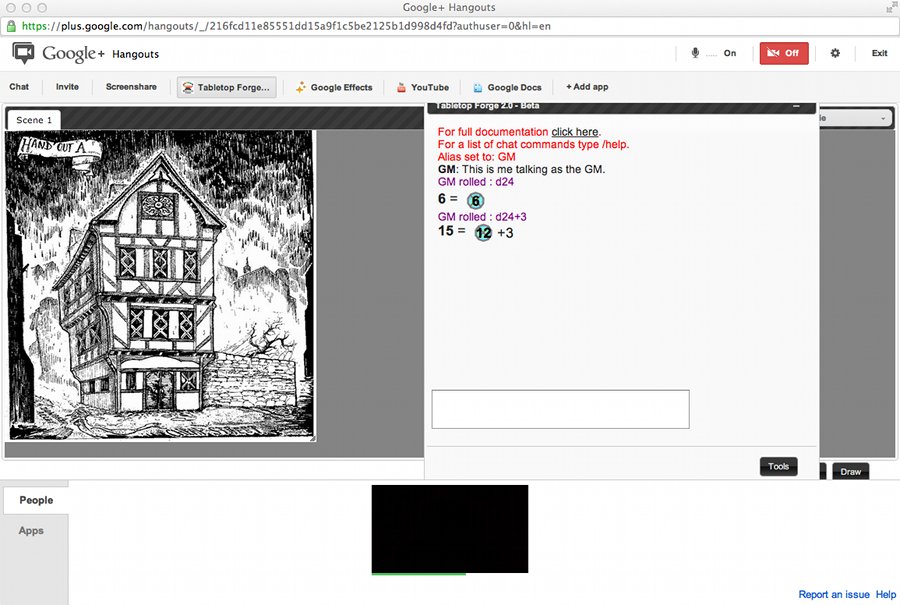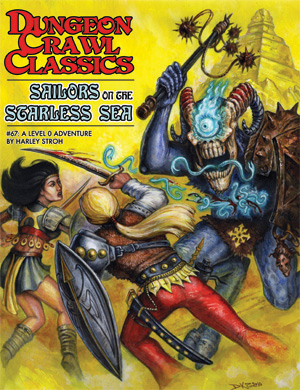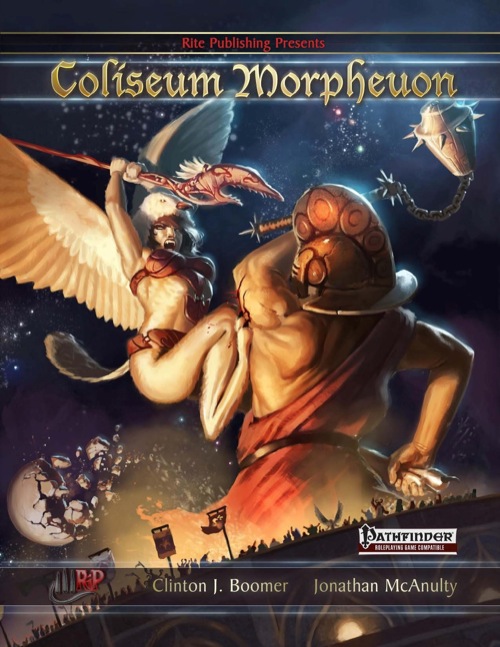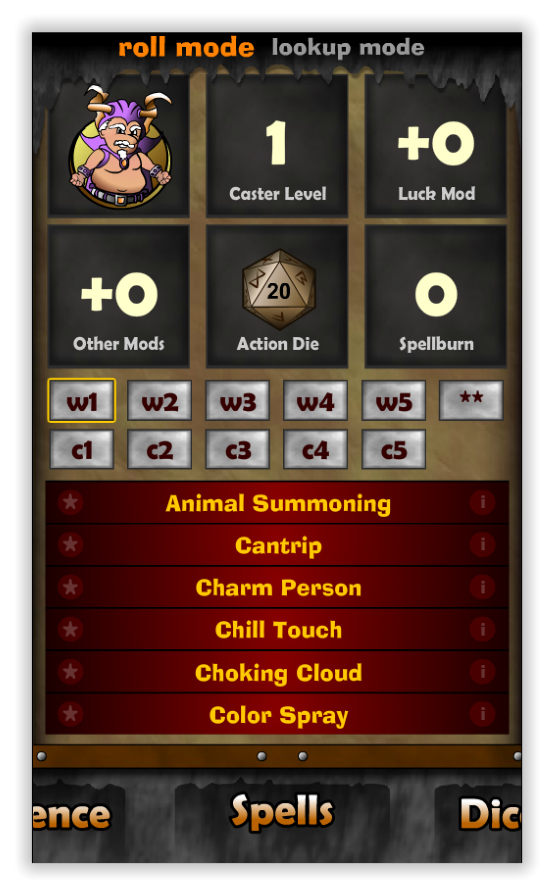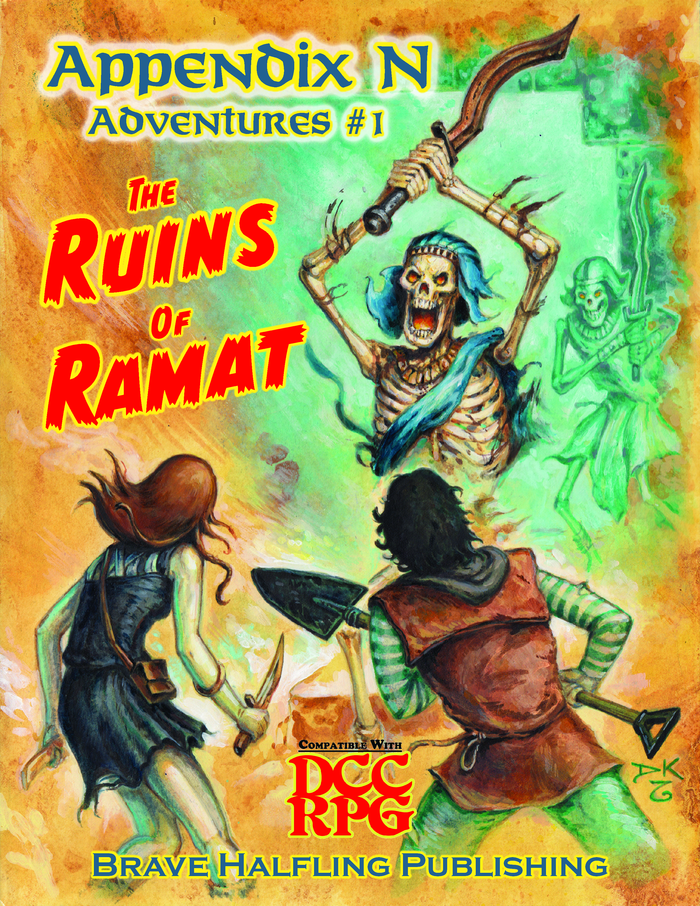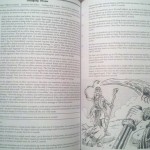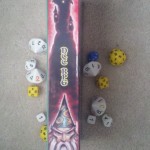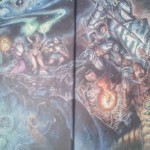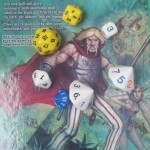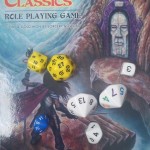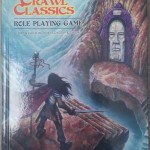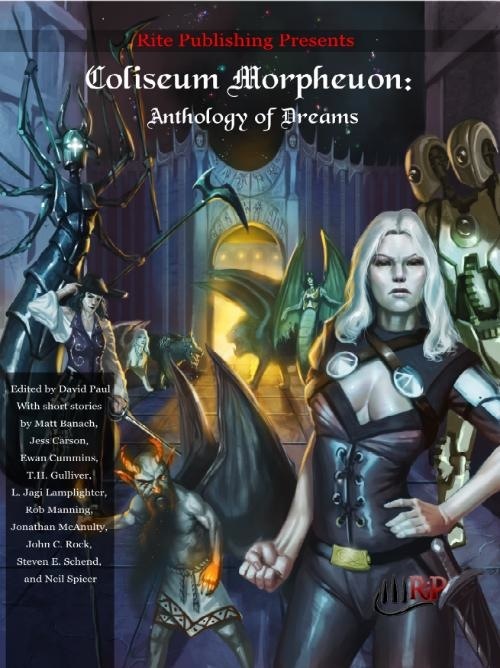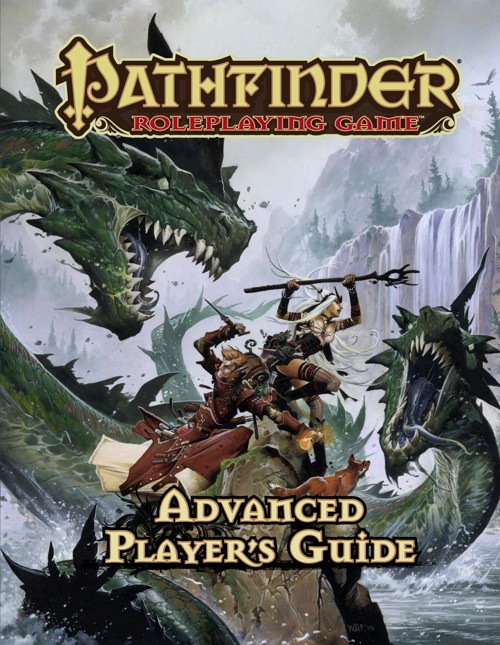 One of the unusual facets of Dungeon Crawl Classics RPG is the use of “funky” dice. Now for the established RPG gamer, the concept of “funky” dice can be unusual. After all we already play with d20’s, d12’s, d8’s, d10’s and the beloved d4. We already play with funky dice, right?
One of the unusual facets of Dungeon Crawl Classics RPG is the use of “funky” dice. Now for the established RPG gamer, the concept of “funky” dice can be unusual. After all we already play with d20’s, d12’s, d8’s, d10’s and the beloved d4. We already play with funky dice, right?
Nope! Dungeon Crawl Classics RPG brings us some more unusual dice, including the d3, d5, d7, d14, d16, d24 and d30. This set of dice is also known as the Zocchi Dice. Some people find this an attraction to the game and others find it as a detriment. I fall into the former camp and enjoyed hunting down the new dice and rolling them during the game.
Dungeon Crawl Classics RPG uses an improved die and reduced die mechanic that moves you up and down a dice chain when rolling. For example, bumping up from a d20 with an improved die roll would be a d24 and a reduced roll from a d20 is a d16. There are also some other charts and mechanics that make use of the funky dice to determine certain results during the course of a game.
When Joseph Goodman was asked about the inclusion of these funky dice in DCC by Suvudo he replied that he simply liked funky dice. In the interview he goes on to say that part of the nostalgia surrounding old-school gaming is related to the unusual dice of the time. Back when the d20 and d4 were unusual to the old-school gamer. As time has come on those types of dice have become “normal”. DCC RPG attempts to bring some of the nostalgia back by using these funky dice that are even new to a lot of us long timer gamers.
 While some dislike them, I think Goodman Games really succeeded with the use of “funky” dice in the game. I haven’t been that excited about dice for a long time. But with DCC RPG I enjoyed reading up on just what dice I needed and hunting them down on the Internet. I found the experience enjoyable and not all that difficult to do, despite what some folks seem to be saying.
While some dislike them, I think Goodman Games really succeeded with the use of “funky” dice in the game. I haven’t been that excited about dice for a long time. But with DCC RPG I enjoyed reading up on just what dice I needed and hunting them down on the Internet. I found the experience enjoyable and not all that difficult to do, despite what some folks seem to be saying.
For those that really want to try DCC RPG, but do not want to hunt down dice, the rulebook describe ways to emulate the “funky” dice with normal dice. We used this way of rolling for the first funnel adventure I played with my son. It worked well, certainly well enough to get a feel for the game.
Over on the Goodman Games forums for DCC RPG someone has shown a way to use only the d8, d10, and d12 in using this method:
- d3 = d12 divided by four
- d4 = d8 divided by two -or- d12 divided by three
- d5 = d10 divided by two
- d6 = d12 divided by two
- d7 = d8 re-roll 8’s
- d8 = standard
- d10 = standard (I’m old and remember when it wasn’t)
- d12 = standard
- d14 = same as d7 but with a control die (high is +7)
- d16 = d8 with an control die (high is +8)
- d20 = d10 with a control die (high is +10)
- d24 = d12 with a control die (high is +12)
- d30 = d10 with a control die (middle is +10, high is +20)
While I prefer to roll the “funky” dice the above methods work as good substitutes as folks decide whether to purchase their own sets of “funky” dice.
In either case – do not let the “funky” dice or Zocchi dice keep you from trying out Dungeon Crawl Classics RPG. Even if you do not feel like purchasing new dice for the game (and come on, what gamer doesn’t like to buy dice!), there are ways to play the game with “normal” dice we RPG gamers all used to.

